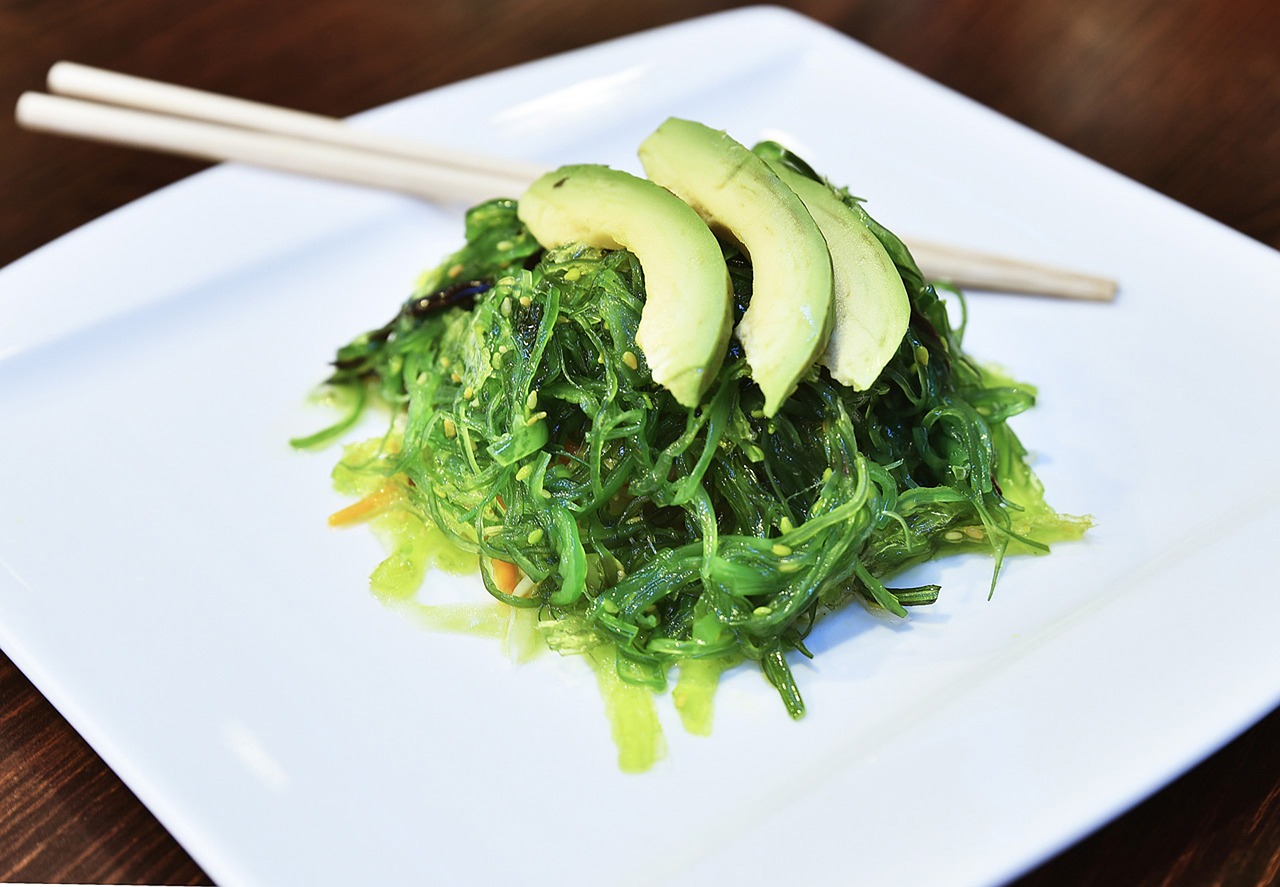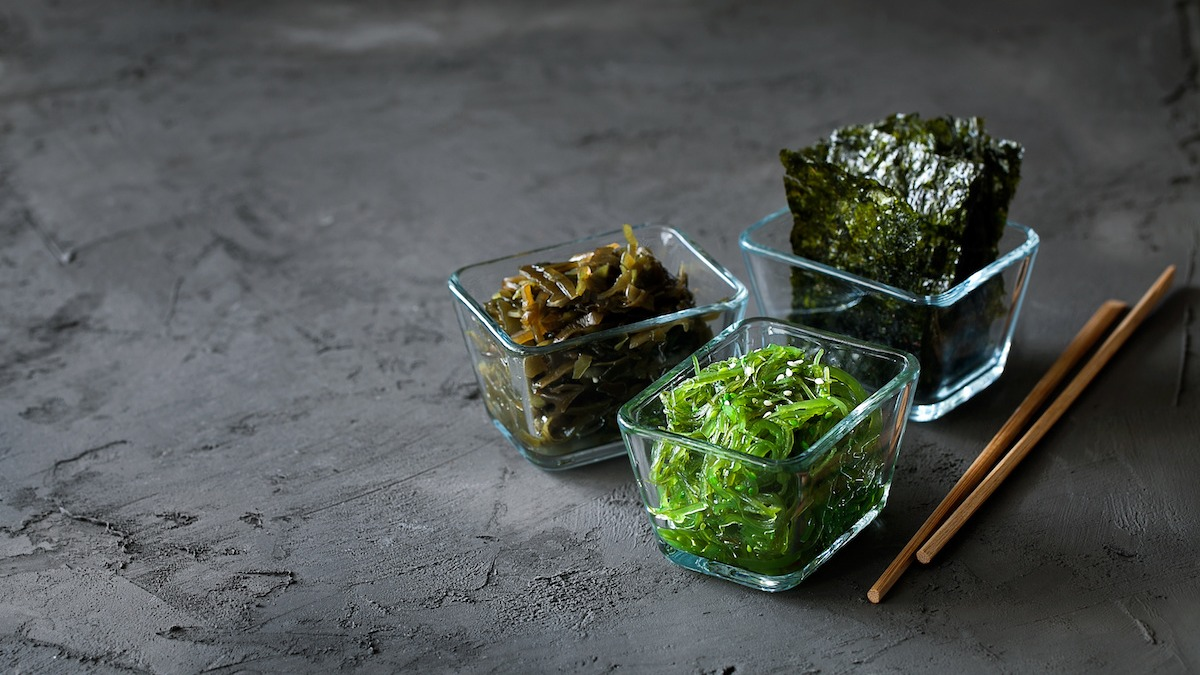Everyday diets often include vegetables from the garden, but the ocean also provides plenty of food resources. Many varieties of seaweed are nutritious, low-calorie food sources, just like their terrestrial relatives. Marine algae have been used for culinary and medicinal purposes for thousands of years in China, Korea, and other nations with extensive coastlines. However, they are most frequently linked with Japanese cuisine. Smoothies now frequently contain seaweed, and dried seaweed snacks are a healthier alternative to chips.
You may have heard that various regions of the world regularly consume seaweed, which may have left you with many unanswered questions. This article will consider the many health advantages that seaweed can offer your body. It is a plant that frequently grows along coastlines and is widespread worldwide.
What is Exactly Seaweed?
The wide varieties of marine algae and plants that flourish in bodies of water, including rivers, seas, and oceans, are called seaweed. Their colors range from red to green to brown and black, and their sizes range from microscopic to enormous underwater forests.
While seaweed can be found on beaches worldwide, it is more frequently a delicacy in Asian nations. Seaweeds are a potent source of nutrients like iron, zinc, magnesium, riboflavin, thiamin, vitamin A, B, C, and K and can be eaten raw or cooked.
Around the world, seaweed is present in oceans and other aquatic ecosystems. While some seaweed is still taken from its natural habitat, most aquatic crops grown today are produced through seaweed farming. Seaweed is grown in saltwater tanks by certain farmers. Most other people possess what would be considered offshore garden plots. To keep a careful eye on the growth and encourage a good harvest by removing any unwelcome plants or marine creatures, these farmers raise seaweed on ropes.
Popular Types of Edible Seaweed
Seaweed is soft and malleable in the water, but it is most frequently dried for preservation, making it necessary to rehydrate it in liquid before eating. Here are a few of cuisine’s most often used varieties of seaweed.
Wakame
While best known for providing a habitat for a variety of marine life species in the shallow, coastal waters around the world, kelp (laminaria) forests also provide an edible seaweed species known as wakame. Wakame, also known as sea mustard, is a dark green seaweed most often found in miso soup. It has a sweet taste, a silky smooth texture, and is a good source of omega-3 fatty acids.
Kombu
One of the most consumed edible seaweeds in East Asia is kombu, a form of kelp. The largest island in Japan, Hokkaido, is one of the top producers of kombu, although it is also widely available along the coast of California. The fundamental component of dashi, the soup stock that forms the basis of many Japanese cuisines like miso soup and ramen, is kombu, which is cooked in water with bonito (skipjack tuna) flakes. Kombu can also be eaten by itself after being softened in hot water and combined with soy sauce and mirin (a Japanese rice wine). Additionally, kombu is steeped in water to create kombucha, a Japanese tea distinct from the fermented beverage popular in the United States.
Nori
When dried, nori, commonly referred to as purple laver, changes color from a deep purplish-red to dark green. Similar to the procedure used to make paper, it is then roasted and pressed into dried nori sheets. The most popular seaweed in the west is this: Nori is used in Japanese restaurants to wrap onigiri and sushi rolls (rice balls). Nori sheets can be used dry, in contrast to some seaweeds that must be reconstituted in water. The powdered version of aonori is used as a seasoning for classic Japanese foods, including okonomiyaki (pancakes) and yakisoba (buckwheat noodles).
Dulse
A reddish seaweed called dulse grows on rocks in the northern Atlantic and Pacific oceans’ cooler waters. Dulse has a delicate, leathery texture and was first gathered in Scotland and Iceland over a thousand years ago. Its flavor is similar to bacon, which can be crisped up in oil to make a favorite bar snack in Canada. Dulse is available in various forms in the food industry, including dry flakes, shredded pieces, and powder. It is used as a flavoring for meat and in soups and baked into chips. To prepare their renowned soda bread, the Irish employ dulse.
Hijiki
Hijiki is a brown seaweed that resembles tiny, thin twigs and turns black when dried. It comes from China, Japan, and Korea’s rocky coastlines. After being taken from the ocean, the hijiki is cooked and dried. It frequently comes with fish or is prepared in stir-fries.
Irish Moss
Irish moss is an indigenous purple and red alga to the Atlantic coasts of the U.S. and Europe. Irish moss has branches stretching out from the stem, making it a small tree. Irish moss has a lot of carrageen, which are sugar molecules (polysaccharides) that are utilized as thickeners and can be found in desserts like tapioca and ice cream.
Sea Lettuce
These blue-green algae from the genus Ulva are mainly found along coasts and are also known as green nori.
What are the Health Benefits of Seaweed?
Here are the health benefits of seaweed:
Contains Antioxidants
The abundance of antioxidants found in seaweed guards against free radical damage and shields cells from its effects. The free radical generation that is out of control relates to health issues like diabetes and cardiovascular illnesses. Flavonoids and carotenoids, which can reduce the production and effects of free radicals, are abundant in seaweed.
Weight Management
Seaweed has a low-calorie count but is rich in fiber and Omega 3 fats. Studies on animals have revealed that compounds in seaweed promote the synthesis of a protein that efficiently metabolizes fat. So eating seaweed can help you feel satiated for longer.
Gut Health
The high fiber content of seaweed is beneficial for gut health. Because seaweed’s fiber delays digestion, the beneficial bacteria in the gut can feed on it and thrive. Diseases can result from any imbalance of good and bad bacteria in the digestive tract. Fiber makes between 25 and 75 percent of the weight of dry seaweed.
Thyroid Regulation
The thyroid glands produce hormones for cell growth, energy production, and repair. Iodine is essential to their ability to produce hormones. Seaweed absorbs a significant quantity of iodine from the salt content underwater. One dried sheet of seaweed can supply 25 to 1682% of the recommended daily intake (RDI) of iodine.
Diabetes Management
According to research, consuming seaweed may help manage diabetes by balancing blood sugar levels. Fucoxanthin, which has been connected to regulating blood sugar levels, is present in the brown seaweed used in this study. Additionally, it aids in regulating sugar increases following a high-sugar diet and insulin resistance.
How to Use Seaweed?
The specialty aisles of larger grocery stores and Asian food stores frequently carry a variety of well-known seaweeds. With these easy seaweed dishes, you can begin incorporating a little superfood into your diet.
- Seaweed Salad: Wakame thin noodles are used in this acidic salad. To hydrate, soak the wakame in water. Squeeze any extra water out of the seaweed after draining it. Wakame should be cut into long, thin strips and placed in a bowl with sliced onions, cilantro, and carrot. Rice vinegar, soy sauce, sesame oil, a dash of sugar, red pepper flakes, and ginger should all be combined in a different bowl. Add sesame seeds on top after dressing the wakame salad.
- Dashi: Such meals like ramen or tsukudani can start with this classic Japanese broth. Kombu seaweed should be rehydrated in a pot of water for 30 minutes. When it boils, turn off the heat and place the pot back on the stove at medium-high. Remove the kombu, add the bonito flakes, and boil the mixture for a few minutes before simmering—the liquid through a colander for filtration.
- Tsukudani: Tsukudani is a seaweed served over rice and is another common dish in Japan. This recipe calls for nori or kombu. Before cutting the sheets into tiny strips, rehydrate the seaweeds. Seaweed is added to a pot of dashi and heated over medium heat while stirring continuously. After about five minutes, add the soy sauce, rice vinegar, mirin, and sake when it starts to thicken. Heat until the liquid has mostly been absorbed. Serve with sesame seeds on top of the rice.
- Seaweed Smoothie: Making a smoothie can be done in unlimited ways. Here is a simple dish that contains seaweed for an added boost in health. Almond milk, frozen strawberries, frozen bananas, spinach, and your preferred seaweed—such as a scoop of ground malaria or Irish moss—should all be combined in a blender. It will also be made sweeter with a little agave syrup. Blend, then dish.
Is there Poisonous Seaweed?
Though this usually refers to microalgae or harmful algal blooms, you may have heard of poisonous algae. These are what cause red tides and the food poisoning caused by shellfish. They can be found in both fresh and saltwater ecosystems and are poisonous if swallowed. E
ven though seaweed is a type of macroalgae, there are no currently recognized dangerous or toxic seaweeds. Some seaweeds will produce acid. However, it is known that these are not any more acidic than your stomach acid, so consuming them won’t hurt you. Only 14 deaths have ever been associated with eating seaweed, and they weren’t caused by the seaweed itself but rather by germs that had colonized it.
Conclusion
The term “seaweed” refers to a vast array of marine plants and algae species found in rivers, lakes, and other bodies of water and the ocean. The saltiness of seaweed will be the flavor you perceive the most. Although it has a fairly distinctive and powerful flavor, different kinds of seaweed have slightly diverse tastes. Most nori, a seaweed frequently used in avocado rolls, is salty. However, dulse is frequently used as a spice because it is recognized to have a smokey flavor.
Although you would anticipate it, seaweed doesn’t have a slimy texture. Seaweed can be slightly chewy and is frequently crisp and crackly. It might become more smooth and chewy after being hydrated. Some varieties of dried seaweed must be soaked in hot water for around 30 minutes since they are too thick and rough to eat as is.


